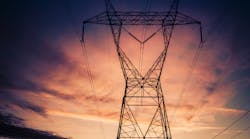As extreme winter weather conditions continue in parts of the South and Midwest, utility customers have had to endure rotating outages. T&D World presents an overview of what rotating outages entail, as discussed by such industry stakeholders as the Southwest Power Pool (SPP) and Califoria ISO.
During the February 2021 extreme winter weather event, shortages in electric power across its entire 14-state region required SPP to direct utilities to reduce energy consumption, SPP said in a video dated Feb. 16, adding that at times, utilities were able to reduce energy usage by asking their customers to conserve power. At other times, as conditions rapidly deteriorated, controlled service interruptions became necessary, SPP said, noting that this was the first time in its 80-year history that it had to take such actions.
All utilities across SPP’s region share responsibility to enact service interruptions when necessary, and SPP does not direct utilities to interrupt power to any particular home or business, SPP said.
Each utility follows its own emergency plan to reduce energy use as needed, SPP said, adding that these actions are taken only after all other options have been exhausted.
SPP said that such controlled service interruptions help protect its utilities and their customers from experiencing uncontrollable events that are likely to last longer, with greater impacts to more people.
The Omaha Public Power District (OPPD) in Nebraska, in a video dated Feb. 15, said that it was directed by SPP to begin to coordinate planned outages in its service territory, meaning that OPPD had to temporarily disrupt power to about 10,000 customers at a time for one hour on a rotating basis.
Numerous factors were impacting the region’s power grid, OPPD said, adding that along with record cold temperatures, the Central Plains were experiencing the high cost of natural gas, as well as operational issues that would not typically be seen in a normal winter, in which production facilities in the panhandle of Texas and in Oklahoma are freezing and limiting supply of natural gas to the region.
Among other things, OPPD said that other utilities across the region were also directed to take these measures to balance the demand on the system in order to avoid blackouts across the region, the OPPD said.
The Texas-based Brownsville Public Utilities Board (BPUB), in a November 2015 video explained rolling blackouts, noting that ERCOT is responsible for making sure that there is enough electricity to satisfy demand, as well as protect the electrical grid, and when demand gets too high, then ERCOT must take action, with the first step being to notify utilities that energy conservation is needed.
The BPUB said that once it gets that call, it immediately notifies all customers — by issuing press releases and posting on social media — that power needs to be conserved.
If demand continues to outpace supply, then rolling blackouts might be necessary, the BPUB said, adding that ERCOT makes that decision in an effort to protect the grid.
The BPUB noted that once that decision is made, utilities have only a few minutes to comply by reducing the electrical load according to ERCOT’s request. Power has to be shut off in one area of the city, usually for about 20 to 30 minutes, and then another area of the city loses power for the same period of time, the BPUB said, adding that the cycle continues until ERCOT discontinues the rolling blackouts.
In an August 2020 video, Pacific Gas & Electric (PG&E) also explained rotating outages, noting that the California ISO forecasts whether there is enough energy supply to meet customer demand. While there is typically enough energy supply to meet demand in California, due to the broad impact of, for instance, a statewide heat wave that was occurring at the time the video was made, customer demand can exceed the amount of supply available, PG&E said. When that happens, at the direction of the ISO, California utilities may be asked to conduct temporary rotating power outages to relieve the strain on the grid and prevent even more unplanned power outages from occurring, PG&E said.
Rotating outages typically last one to two hours and multiple blocks of outages may be called until they are no longer needed to maintain a balance between the energy supply and customer demand, PG&E said, adding that locations are chosen at random, but added together, they equal the amount of energy needed to meet the state’s needs.
Since the ISO’s orders to conduct rotating power outages are sudden, immediate, and must be executed within 10 minutes, it is typically not possible to notify customers in advance, PG&E said.
In an April 2018 video, the California ISO noted that at two control centers in Northern and Southern California, its operators fine-tune the balance of supply and demand using a competitive market for electricity, as well as serve as air traffic controllers, overseeing electricity delivery across a span of 25,000 circuit miles of power lines.
The ISO also noted that geospatial maps display multiple layers of data on an 80-foot-wide video screen, instantaneously showing wind and solar patterns that help forecast renewable production.
The ISO said that sophisticated computer systems help grid operators take a pulse of the grid every four seconds. Giant heat maps show when fires could threaten high-voltage power lines, the ISO said, adding that flashing lights, digital readings, and alarms indicate when power flows are above or below safe levels.
The ISO added in its 2018 video that while green energy is becoming a larger part of the power mix, there are still some 1,400 conventional generating units connected to the ISO grid, with many of those power plants able to be quickly dispatched to match renewable output, smoothing any fluctuations.


